Guest post by Joseph Luzzi
On November 3, 1993, a throng of fifteen thousand poured into St. Mary of the Angels Basilica in Rome and the adjoining piazza to bid farewell to the recently deceased Federico Fellini, while millions more watched a live telecast of the ceremony. To many, it wasn’t just the funeral of a great director that was taking place: it was a somber ritual marking the passing of Italy’s cinematic golden age that Fellini was thought to embody. He had begun his career in the 1940s, working as a scriptwriter for man he called his cinematic generation’s version of the biblical Adam: Roberto Rossellini, whose film Rome, Open City (1945) heralded the birth of neorealism, a documentary-style film movement that emphasized the use of natural lighting, nonprofessional actors, long takes, and strong moral messages aimed at renewing the Italian spirit after two decades of Fascism and five years of World War II. After his neorealist apprenticeship, Fellini became the consummate Italian auteur in the 1950s and beyond, making the kind of deeply personal, idiosyncratic film that linked him with other auteurs including Michelangelo Antonioni, Bernardo Bertolucci, and Pier Paolo Pasolini, a vastly eclectic group whose collective brilliance made Italian film the envy of the world. By the time of Fellini’s death, skeptics reasoned, such Italian eminence on the silver screen was a distant memory. So they came to bury Fellini and, with him, the nation’s cinematic glory.
This melancholic position is one I can empathize with, having written a book, A Cinema of Poetry: Aesthetics of the Italian Art Film (Johns Hopkins University Press, 2014), that celebrates what I call the “art film tradition” that began with Italian neorealism and extended into the auteur age. I argue that, in one way or another, many of the great films from this era—Rossellini’s Open City, Fellini’s La Strada (1954), Antonioni’s L’Avventura (1960), Bertolucci’s Conformist (1970), Pasolini’s Decameron (1971), to name a few—were not just great films: they also offered profound meditations on aesthetic issues that transcended the film medium, sometimes on questions stretching back to antiquity. For example, despite Fellini’s training in the deeply allegorical films of neorealism—Open City ends with a shot of Partisan youths marching in full allegorical splendor toward St. Peter’s Basilica looming on the horizon and the ruined city of Rome below it, the spiritual and secular realms they must rehabilitate—he opted for more open, symbolic modes of filmmaking, recalling the ancient tensions between symbol and allegory, a key issue in the history of aesthetics. In La Strada, Fellini’s character the Fool comforts the beleaguered Gelsomina by claiming that her strongman husband, Zampanò, treats her badly for a reason—and that everything in the world has its purpose, even the lowly stone he picks up and shows her after Zampanò’s arrest. What does this stone “mean”? It’s impossible to say. Its openness to interpretation and ambiguity represents Fellini’s wish to move away from the sociopolitical doctrines of neorealism and into a more private, interior realm—what the great French critic André Bazin called Fellini’s “neorealism of the person.”
So did Italian cinema “die” when Fellini himself died? No, but something did go down into the coffin with him. His death, I believe, was the symbolic end of neorealism’s legacy, the movement that either created some of the nation’s most enduring classic cinema or shaped those young directors who would go on to define themselves against the movement when creating their own masterpieces. Antonioni began his career as a film critic and documentary filmmaker in the 1940s. Even though he would eventually make intensely artful, atmospheric films about a rebuilt Italian middle class in the 1950s and 1960s, he always believed he was pursuing that same elusive “real” that obsessed Rossellini, Vittorio De Sica, and Luchino Visconti and other neorealists of the 1940s. Even Pasolini, who described neorealism as a glorious failure that tried to remake Italy culturally when what it needed was socioeconomic renewal, began his career with gritty neorealist-inspired films about a Roman pimp (Accattone, 1961) and an aging prostitute (Mamma Roma, 1962), before moving on to the more stylized and nihilistic films from the time leading up to his murder (Porcile, 1969, and Salò, 1975). The connections to neorealism for many more distinguished Italian filmmakers are visceral and include such illustrious names as Ermanno Olmi, Francesco Rosi, Ettore Scola, and the Taviani brothers, who as recently as 2013 made a film about a group of inmates performing Shakespeare’s Julius Caesar in a Roman maximum-security prison (Caesar Must Die, 2012). In A Cinema of Poetry, I call neorealism Italy’s preeminent “film school”: the training ground that gave young filmmakers more than just a technical education about the ins and outs of filmmaking. It infused them with a moral vision, the desire by pioneering neorealists like Rossellini to put cinema in the service of reimaging Italian life after the ravages of total war and the ethical compromises of life under Mussolini. Even when they diverged from the neorealist mandate of documentary-style scripts and shooting, Fellini and his auteur cohort were forever committed to this life-giving link between the call of art and the needs of their nation, as they sought to rifare l’Italia, remake Italy on screen.
 Joseph Luzzi is an associate professor of Italian at Bard College and author of A Cinema of Poetry: Aesthetics of the Italian Art Film and Romantic Europe and the Ghost of Italy, which received the MLA’s Scaglione Prize for Italian Studies.
Joseph Luzzi is an associate professor of Italian at Bard College and author of A Cinema of Poetry: Aesthetics of the Italian Art Film and Romantic Europe and the Ghost of Italy, which received the MLA’s Scaglione Prize for Italian Studies.















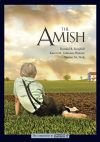
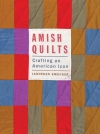

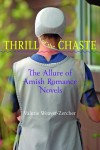

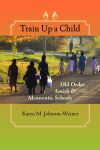
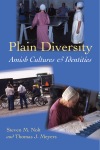
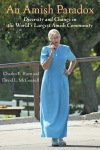
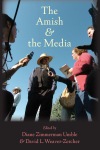

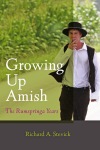
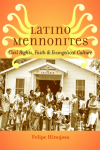
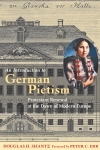
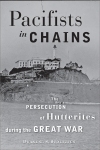















You must be logged in to post a comment.